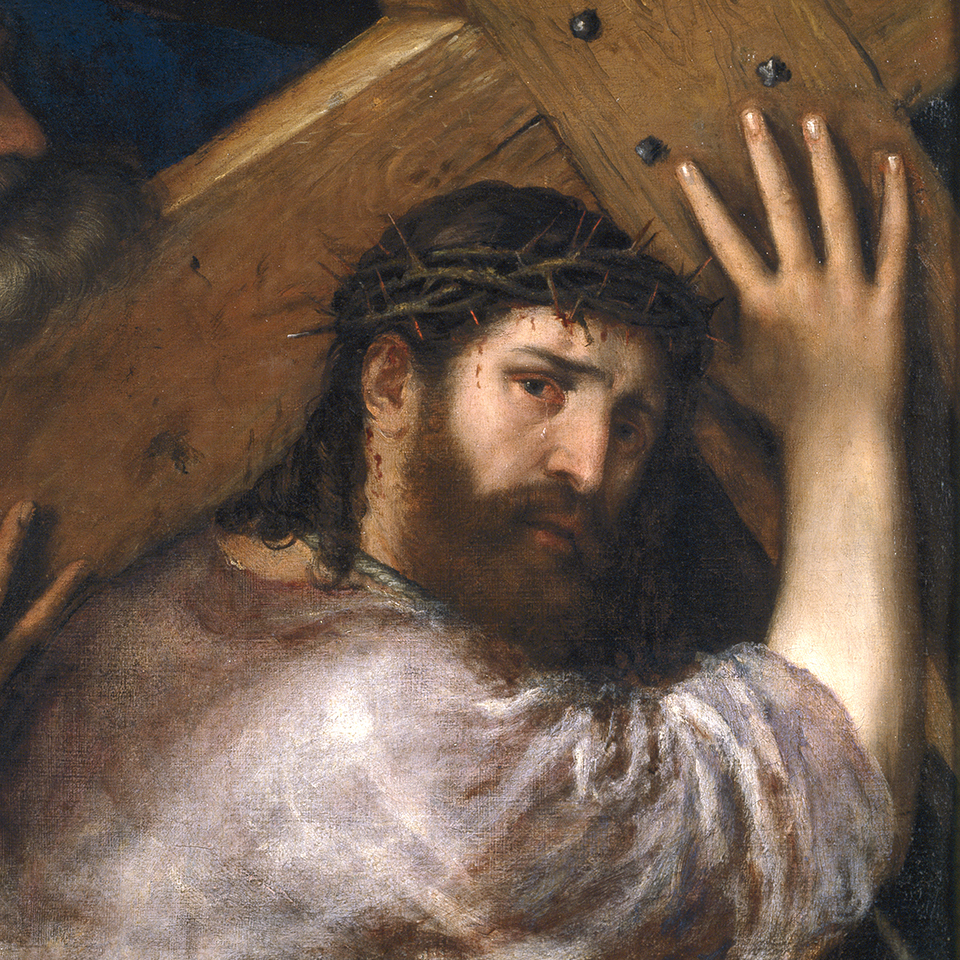The story goes that St. Ignatius of Loyola, while recovering from a severe wartime injury, filled a three-hundred-page notebook with what some might call “daydreams of Scripture”—a way of passing the heavy hours on his hands that actually developed into an important practice of prayer within what has become known as Ignatian spirituality.
Anyone who has made an Ignatian retreat, whether extended or brief, has likely at some point been advised to concentrate on some scene within the Gospels and “imagine yourself there, as part of the crowd, or one of the Apostles or main players; place yourself within the scene.”
The idea is to make Scripture come alive within your mind and senses, and see what you learn—what new insight or perspective adds to your prayerful contemplation. A retreat master might say something like, “Imagine the dust, the dirt, the look of frayed robes around you, the scents within the hot air,” and for many that prompt alone is enough to activate the imagination. Perhaps suddenly we are part of a confused mob, wondering at being encouraged to shout “Crucify!” toward a battered man for whom, just a week earlier, we had been laying down palms and shouting “Hosanna!” We find ourselves looking at those around us—some clearly troubled, others so easily swayed—and then asking ourselves important questions about how easily our own passions can become roused beyond our better instincts, how easily we are carried along in a crowd.
Or perhaps our imagination draws us to the bleeding, hunched form of the man, Jesus of Nazareth, and we are observing a trickle of blood falling spattering onto the stone of the portico, and this sparks us to remembering the last time we drank of the Precious Blood during Mass, believing, knowing, that within a mere drop of that Blood is the fullness of Christ, entire. That thought may remind us of the sacrifice of the lambs at Passover—how within the experience of Jews in the first century it was common to see blood flowing down from the altar and onto the temple steps as lamb after lamb was slain, their carcasses raised upon wooden stands that looked very much like crosses, until all the blood was drained from their bodies.
The lambs, the sacrifices (so many of them!), the blood that cleanses.
Perhaps we’ve read about the Passover many times before, and heard dozens of sermons about Christ, the Paschal Lamb. But suddenly, having placed ourselves within just a few lines of Scripture, we have managed—through some combination of the Holy Spirit and our own subconscious attractions working together—to deeply grasp and internalize what before was a vague idea for us: that Christ Jesus is the Lamb slain, the Cleansing Sacrifice, the Blood pouring down, in time and transcending time, on Calvary and re-presented on our own altars, the once-for-all sacrifice.
The experience of scriptural prayer, dredged through our imagination, helps to broaden our insight into the Good News, and forever deepen our understanding of the sacraments and teachings of Christ and his Church.
Such prayer can move us in surprising ways. In contemplating Herod’s horrific order to slay all of the masculine children born throughout Bethlehem and Judea, for example, we might find ourselves wincing at the piercing sound of mothers in grief—of hoofbeats and shrieks and the gleeful growls of soldiers grown hard and uncaring about human life, especially about people on the peripheries, already devalued. All of that might direct our thoughts to the marginalized among us, to our own cruelties or indifferences to the oppressed of our time, and thereby ignite an examination of conscience.
Or it might draw us to imagining Herod, waiting for a scribe to write out his order, contemplating the ring with which he will seal it, and the ways of power. That might bring us to ponder how earthly authority that is understood as a charge from the Lord might excite mercy, while that same power, when matched with human fear and brokenness, can warp the soul.
All of that might bring insight into how we address a situation at work, or indeed, with our own children at home.
Especially in Lent, this Ignatian way of contemplative prayer can help Christians to tap deeply into Scripture in a way that can refresh the roots of our faith and renew our understanding. And it is much easier to put into practice than we might think, because we all live within our imagination more than we realize, and can access it more readily than we know. For those who practice lectio divina or keep a prayer journal, such contemplation might come much more naturally than expected; all one needs is a bit of attention to the Holy Spirit. What line of Scripture is jumping out for you, feeling urged upon your attention? And, conjuring the spirit of St. Ignatius, how near is a pen and pad of paper to record your daydreams of Scripture?
How willing are you to take a dive into the Sea of Galilee with Peter as he rushes toward Christ, or to walk behind James and John, those “Sons of Thunder,” as they debate questions both large and picayune, or to stand beneath the cross and feel the last drop of a Savior’s blood fall upon your own hand?
There is powerful intimacy and personal insight to be gained in these prayers of the imagination. Do not be afraid to smell the smells, or hear the sounds, or to catch the eye of the Christ, and then discover that he knows you to your depths and will meet you there, if you permit him.
Write it down and put it away. When you read it over a bit later, you may be very surprised at how much you have come to discover about heaven and earth, and the state of your own soul.
This first appeared in issue #5 (Autumn 2020) of Evangelization & Culture, the quarterly journal of the Word on Fire Institute
